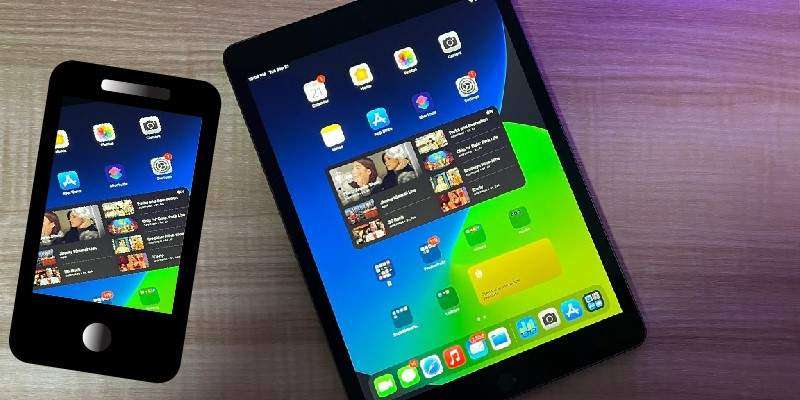
It’s easier to imagine what life would be like with our smartphones and tablets. These gadgets are becoming essential to our daily lives because they let us stay in touch, talk to others, and get information from anywhere. So, it shouldn’t be a surprise that more and more businesses are turning to mobile apps to connect with and talk to their customers. But deciding whether to focus on creating apps for phones or tablets is essential when it comes to making apps
In this post, we discuss the differences between making mobile apps for phones and tablets to help you choose the best method for your business and how we can help your company speed up the process of making apps.
Differences Between Apps For Phones And Apps For Tablets
Let’s start with the main differences between phone and tablet apps.
1. Screen Size and Resolution
The most apparent difference between them is the size of their screens.
Phone screens are usually smaller than tablets, usually 7 inches or bigger. Most phone screens are between 4 and 6 inches on the diagonal. This means that buttons, text, and pictures will be more significant on tablets than on phones. Some of these parts can need movement to fit the larger screen space.
The resolution of tablet and phone screens is also very different.
Since smartphones usually have more pixels than tablets, pictures and text will look clearer on smartphones. Because of this, it can take a lot of work to make an app that works well and looks great on both devices.
2. Navigation and User Interface
Apps for phones and tablets have very different navigation and user interfaces.
Most of the time, users of mobile apps can use all of the app’s features with just one or two taps. This is because the design of mobile devices allows users quick access to information.
Tablets, on the other hand, are made with giant screens and more information in mind. Features can be spread out over multiple screens or shown in a sidebar to give users a better experience.
3. Hardware Performance and Capabilities
Because smartphones usually have less powerful processors than tablets, the hardware capabilities of these devices can also vary a lot.
This could affect the app’s features and how quickly it can do tasks.
For example, a phone can lack enough processing power to run features like augmented reality (AR) or complex graphics.
4. Cost And Factors Related To Development

It’s important to consider how much it costs to make apps for smartphones and tablets. Phone apps can cost more because they often need more coding and optimization than tablet apps.
Also, because phones have so many different screen sizes and resolutions, developers need to make different versions of an app for other platforms to ensure it works.
With the right platform, you can streamline the app and make it more effective. With A platform for creating and managing mobile apps, developers can make high-quality apps for phones and tablets quickly and easily. With its powerful development tools, designers can make user experiences that are fun and don’t hurt performance on any device.
What To Think About When Choosing Between Apps For Phones And Tablets

When deciding between making apps for phones and tablets, there are a few essential things to consider.
1. Who It’s For And How It’s Used
Before deciding which platform is best for the user experience you want, you need to know who your audience is and how they use technology.
For example, if most people use the app while driving, a phone app can be the best choice. On the other hand, a new survey shows that more than 1.28 billion go for tablets while 86% of people who own tablets use them at home.
So, it might make sense to make a tablet app if your target audience is people who like to watch media at home.
2. Goals Of The Business And How Users Are Supposed To Feel
When making this choice, keeping your goals and the best user experience in mind is essential.
It’s essential to make sure that the user experience is custom-made for each platform and consider each platform’s design concerns.
Because of its bigger screen, a tablet app, for example, would need more features and functions, while a phone app can need to focus on being easy to use and fast.
3. Budget And Resources Available

When deciding whether to make apps for phones or tablets, you should also think about your budget and how much time you have.
Making an app for a new platform could be costly and consume a lot of time, so it’s essential to make sure you have all the right tools before you start. Also, making an app for a tablet might require more complicated hardware requirements and design decisions, which could add to the app’s cost.
Conclusion
Creating apps for phones and tablets or hybrid mobile app development could be a great way to reach more people and get them involved. With the right platform and development method, developers can make high-quality experiences that work on different devices quickly and affordably.
Develop robust mobile apps quickly and effortlessly using app development services from App Development Pros. They are one of the top iPad app development companies, that makesmobile and tablet apps. With a fast creation process, robust analytics tools, and strong customization choices will interest users—optimizing each app for its platform and ready to launch immediately.

